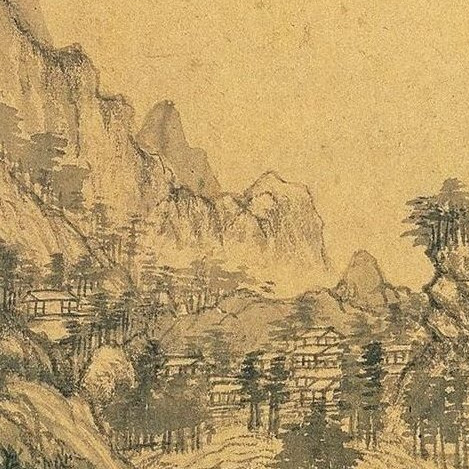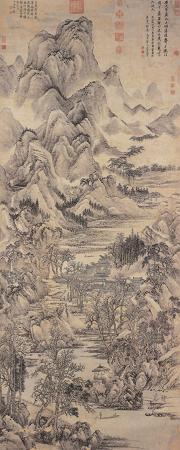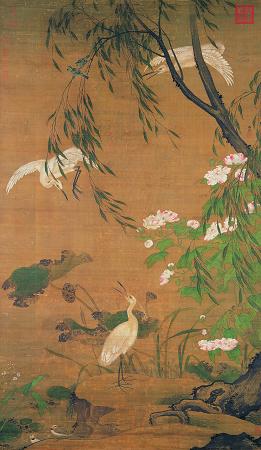National Palace Museum, Taipei. The National Palace Museum, located in Taipei and Taibao, Chiayi County, Taiwan, has a permanent collection of nearly 700,000 pieces of ancient Chinese imperial artifacts and artworks, making it one of the largest of its type in the world. The collection encompasses 8,000 years of history of Chinese art from the Neolithic age to the modern. Most of the collection are high quality pieces collected by China's emperors. The National Palace Museum shares its roots with the Palace Museum in the Forbidden City, whose extensive collection of artwork and artifacts were built upon the imperial collections of the Ming and Qing dynasties. The National Palace Museum was originally established as the Palace Museum in the Forbidden City on 10 October 1925, shortly after the expulsion of Puyi, the last emperor of China, from the Forbidden City by warlord Feng Yuxiang. The articles in the museum consisted of the valuables of the former Imperial family. In 1931, shortly after the Mukden Incident Generalissimo Chiang Kai-shek's Nationalist Government ordered the museum to make preparations to evacuate its most valuable pieces out of the city to prevent them from falling into the hands of the Imperial Japanese Army. As a result, from 6 February to 15 May 1933, the Palace Museum's 13,491 crates and 6,066 crates of objects from the Exhibition Office of Ancient Artifacts, the Summer Palace and the Imperial Hanlin Academy were moved in five groups to Shanghai. In 1936, the collection was moved to Nanking after the construction of the storage in the Taoist monastery Chaotian Palace was complete. As the Imperial Japanese Army advanced farther inland during the Second Sino-Japanese War, which merged into the greater conflict of World War II, the collection was moved westward via three routes to several places including Anshun and Leshan until the surrender of Japan in 1945. In 1947, it was shipped back to the Nanjing warehouse. The Chinese Civil War resumed following the surrender of the Japanese, ultimately resulting in Generalissimo Chiang Kai-shek's decision to evacuate the arts to Taiwan, which had been handed over to the ROC in 1945. When the fighting worsened in 1948 between the Communist and Nationalist armies, the National Beijing Palace Museum and other five institutions made the decision to send some of the most prized items to Taiwan. Hang Li-wu, later director of the museum, supervised the transport of some of the collection in three groups from Nanking to the harbor in Keelung, Taiwan between December 1948 and February 1949. By the time the items arrived in Taiwan, the Communist army had already seized control of the National Beijing Palace Museum collection so not all of the collection could be sent to Taiwan. A total of 2,972 crates of artifacts from the Forbidden City moved to Taiwan only accounted for 22% of the crates originally transported south, although the pieces represented some of the very best of the collection. Three shipments from Nanjing to Keelung between 1948 and 1949 Departure-Arrival Crates from Total National Beijing Palace Museum National Central Museum National Central Library The IHP of Academia Sinica MOFA National Beijing Library 22-26 December 1948 320 212 60 120 60 772 6-9 January 1949 1,680 486 462 856 18 3,502 30 January-22 February 1949 972 154 122 1,248 Total 2,972 852 644 976 60 18 5,522 a. In the third shipment, 728 crates from the National Beijing Palace Museum and 28 crates from the National Central Library were left in Nanjing due to limited space aboard. The fourth shipment was halted by then acting president Li Zongren. The collection from the National Beijing Palace Museum, the Preparatory Office of the National Central Museum, the National Central Library, and the National Beiping Library was stored in a railway warehouse in Yangmei following transport across the Taiwan Strait and was later moved to the storage in cane sugar mill near Taichung. In 1949, the Executive Yuan created the Joint Managerial Office, for the National Beijing Palace Museum, the Preparatory Office of the National Central Museum and the National Central Library to oversee the organization of the collection. For security reasons, the Joint Managerial Office chose the mountain village of Beigou, located in Wufeng, Taichung as the new storage site for the collection in the same year. In the following year, the collection stored in cane sugar mill was transported to the new site in Beigou.
more...














